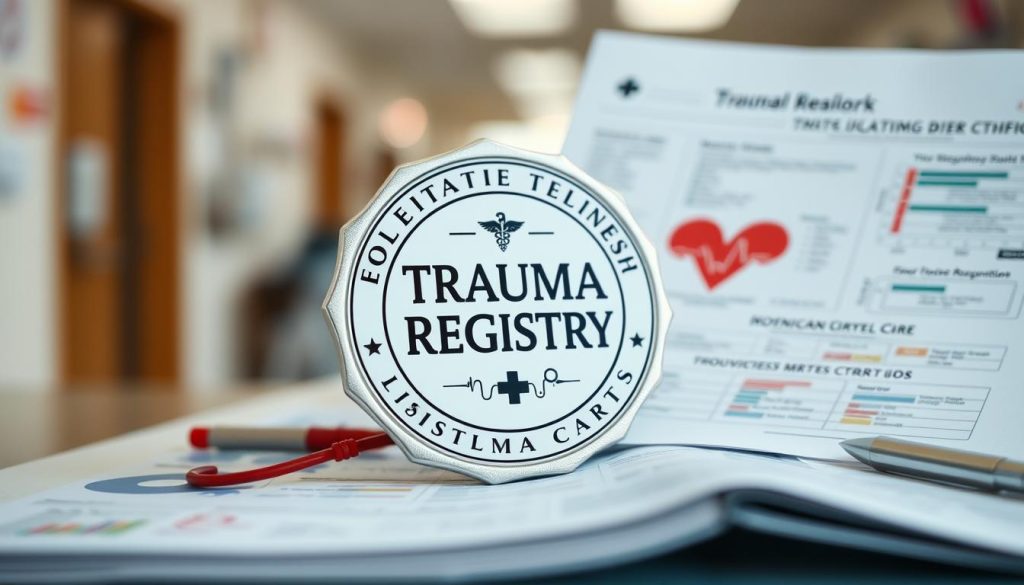Working in trauma registry management? Getting the Certified Specialist in Trauma Registry (CSTR) credential is key to moving up. This guide will give you all you need to know and do to ace the CSTR test.

As a trauma professional, getting the CSTR (Certified Specialist in Trauma Registry) certification is a big deal. It shows you’re good at trauma registry management. You’ll learn about data collection and coding, data analysis, and quality improvement. This certification boosts your career and shows you care about top-notch patient care and trauma registry progress.
Trauma registrars are key in trauma center verification and trauma system performance. They collect, analyze, and report on vital patient data. The CSTR certification makes sure they know how to manage trauma registry operations, follow national trauma data standards, and help improve quality in trauma centers.
To get ready for the CSTR exam, you can use many essential resources. There are study guides, practice tests, and trauma registry training programs. These focus on injury coding, trauma scoring systems, registry software proficiency, and clinical data abstraction. Learning these skills well can help you pass the CSTR exam and start a fulfilling trauma registry career.
| Resource | Description |
|---|---|
| CSTR Exam Prep Guide | Comprehensive study materials covering all aspects of the CSTR exam, including trauma data management, coding, and quality improvement initiatives. |
| TQIP Compliance Webinars | Online training sessions that provide in-depth guidance on adhering to the National Trauma Data Standards and achieving TQIP compliance. |
| Trauma Registry Coding Workshops | Hands-on training workshops that focus on mastering injury severity scoring and trauma registry coding techniques. |
Managing a trauma registry well means knowing a lot about injury coding and data collection. It’s important to use trauma registry software right. This helps keep data accurate and supports improving care quality.
Using systems like the International Classification of Diseases (ICD) and the Abbreviated Injury Scale (AIS) is key. It’s vital to code injuries correctly. This helps make reports useful and supports Trauma Quality Improvement Program (TQIP) goals.
Being good at these skills helps trauma registry workers. They can help improve care, follow rules, and make reports that help make decisions. This drives better care in trauma centers.
| Key Competencies | Description |
|---|---|
| Injury Coding | Knowing how to use systems like ICD and AIS is key. It helps code injuries right and supports trauma registry reporting and trauma registry analysis. |
| Trauma Scoring Systems | Being skilled in scoring methods like ISS and TRISS is important. It helps measure injury severity, check patient results, and guide quality improvement initiatives. |
| Trauma Registry Software | Knowing how to use trauma registry software is crucial. It helps make trauma registry operations smoother, keeps skills sharp, and supports trauma center compliance and trauma data management. |
Getting ready for the CSTR (Certified Specialist in Trauma Registry) exam? Learning how to manage your time and take tests well can really help. A smart plan for the test can make you feel more confident and accurate.
Time is key during the CSTR exam. Get to know the test’s layout and practice your speed. This way, you’ll have enough time for every question.
Learn to spot important details fast and rule out wrong answers. Using tricks like skimming and elimination can save you time. This helps you finish the test on time.
Good practice tests and study guides can make a big difference. They let you get used to the test’s feel and types of questions. You’ll also see where you need to study more.
By doing practice tests, you can check your knowledge and work on your weak spots. These tools help you understand trauma registry better. They make you more ready for the CSTR exam.